WARNING: PHOTOS OF BUTCHERING CHICKENS FOLLOW. KNIVES. BLOOD. DEATH. PROCEED WITH DISCRETION.
The first of many harvests took place this weekend, as it was time to send our beloved (or rather, tolerated) meat chickens to the freezer. It's never a day I look forward to – taking the life of an animal brings me no joy.
Well, scratch that. It does bring me joy in knowing that the Lord has provided these chickens for us and that He's made it possible for us to raise them, care for them, and end their lives as best as we can. But other than in the provision for our family, it's not the most fun task on the farm and (in my humble opinion) not one to be taken lightly.
To live and then die that others may live is sacrifice. These birds were sacrificed for our family and we are thankful for that.
There were too many to know by looks and none of our chickens are named so the kill process goes off without too much sorrow, though the sight is slightly grim. We use kill cones (plastic gallon containers that have been nailed to a tree, the bottom of the container cut off and the neck of the container cut larger to fit the head through) which makes the killing process much calmer and less dramatic, seeing as there are no headless chickens flopping around the barnyard. Instead, the chickens are gently placed into the cones where they stay quiet, their wings pinned to their sides. Once they are calm, we give thanks for the bird, and quickly slit the artery in the neck without cutting the windpipe. Essentially, the chicken bleeds out and quietly ‘falls asleep' while the heart continues to pump the blood from their body – it's very gentle (as gentle as killing can be).
The men folk in our family usually take on this task, as I prefer to complete the other stages of the process. Scalding. Plucking. And gutting.
Here's a quick play-by-play of the process on how to butcher a chicken.
How to Butcher A Chicken
The Kill:
1. Place the chicken upside down in a kill cone like this (or a homemade version, like ours). Using a sharp knife, slit the artery in the throat (which runs right on the backside of the earlobe) and allow the blood to drain out and the chicken to die – this usually takes around 30 seconds to 1 minute. Give it more pressure than you think you'll need – getting the knife through the feathers can be tough and multiple attempts and cuts is not desirable for anyone involved.
2. Once the chicken is dead, remove it's body from the kill cone.
The Scalding:
3. Gently dip the chicken into a large pot of 145-150 degree water for 3 seconds, shaking it gently while it's submerged. Pull the chicken from the water for 3 seconds. Dunk it again in the hot water for 3 seconds, shaking it gently. Again, pull the chicken out of the water for a few seconds. Grab a feather from the bird and pull it out. Does it slip out easily without resistance? If yes, proceed to the next step. If not, continue to dunk the bird for 3 seconds at a time until the feathers pull out like warm butter, baby.
The Plucking:
4. Once the chicken has been scalded, begin plucking the feathers by hand OR transfer the bird to a plucker like this one. We borrow ours from a friend to make quick work of the large amount of birds we harvest at a time. To pluck with a machine, we simply place the scalded chicken into the plucker, flip on the switch, and spray the chicken with water while the machine is running (this helps to remove all those little feathers that would otherwise stick to the skin). There are also a few chicken plucking drill attachment (like THIS ONE) as an option. It should look like this once it's plucked:
The Cleaning:
5. Transfer the chicken to the ‘evisceration station' (as we like to call it). At this station, the head, feet, and guts will be removed.
First the feet. Halfway up their legs there's a joint that connects the leg to the foot – cut right in the middle of the joint and the feet will easily be removed. I use a filet knife for this and it works just fine.
Next, the head. This you may need a pair of pruners for – it can be a bit tricky to remove. Once the neck bone is broken though it's easy enough to cut through the remaining skin.
DON'T discard these parts! I always save them for homemade chicken stock – they're so rich in gelatin and minerals!
6. After the feet and head are removed, flip the chicken over so it's breast side up. At the narrow end of the breast, grab the skin with one hand and use your other hand to cut a slit in the skin. Get all your fingers in there and use your hands to gently pull open the body cavity, revealing the innards.
Once you can see the innards, it's easy to reach in with one hand and pull out all of the guts. Using your fingers, it's nearly impossible to rupture the intestines, but be careful none-the-less. It's important that no poo gets onto the meat as this will contaminate it. Pull, pull, pull.
At this point, you'll likely notice that there is a long straw-like thing at the top of the bird that's keeping you from removing the guts completely. That's the windpipe. Reach in there and wrap your fingers around it and reallllly pull hard. It'll come out. There should be nothing left in the body cavity when you're finished.
7. But wait? The guts are still attached to the chicken, aren't they?! Yes. Yes, they are. So what you have to do is take a sharp filet knife and gently cut a ‘v' shape around the vent (ahem, the ‘poo hole') of the chicken. BE CAREFUL to not puncture the intestines or the vent. Just cut around it and remove it completely.
If this all sounds super confusing, check out this wonderful video from Joel Salatin on how to butcher a chicken:
BAM. Looks just like a store bought chicken, doesn't it? Except it tastes 1,000 times better.
8. Place the chicken into a large bucket filled with ice and let it remain there while you finish harvesting the rest of the birds.
The Preserving:
9. Once all the birds are cleaned, I take them inside to wash them out and ‘quality control'. Any stray parts left in the body cavity are removed, leftover feathers are plucked, the entire chicken is rinsed with water (both inside and out) and all of the chickens are placed into individual shrink wrap bags, along with the head, the feet, and any other bits we will keep. (But wait! don't shrink wrap them yet!)
10. Place the chickens, in their open shrink wrap bags, into the refrigerator for 1-2 days. This will allow the chickens to ‘air-chill' – an incredibly important step in the process. Without this, the chicken tends to be stiff and chewy. During the air-chilling, the meat has a chance to rest and relax, resulting in a much more tender bird.
11. After the air-chilling period, shrink wrap the chicken (according to the bags instructions) and place in the freezer for storage.
While it may sound like an overwhelming process, I'm incredibly surprised at how easily and quickly it can all be done. In a matter of hours, you can have 6, 9, or 12 months worth of chickens put up.
An incredible blessing for any homesteader!
Thank you, Lord, for these beautiful chickens! And that plucking machine.
And Amen.

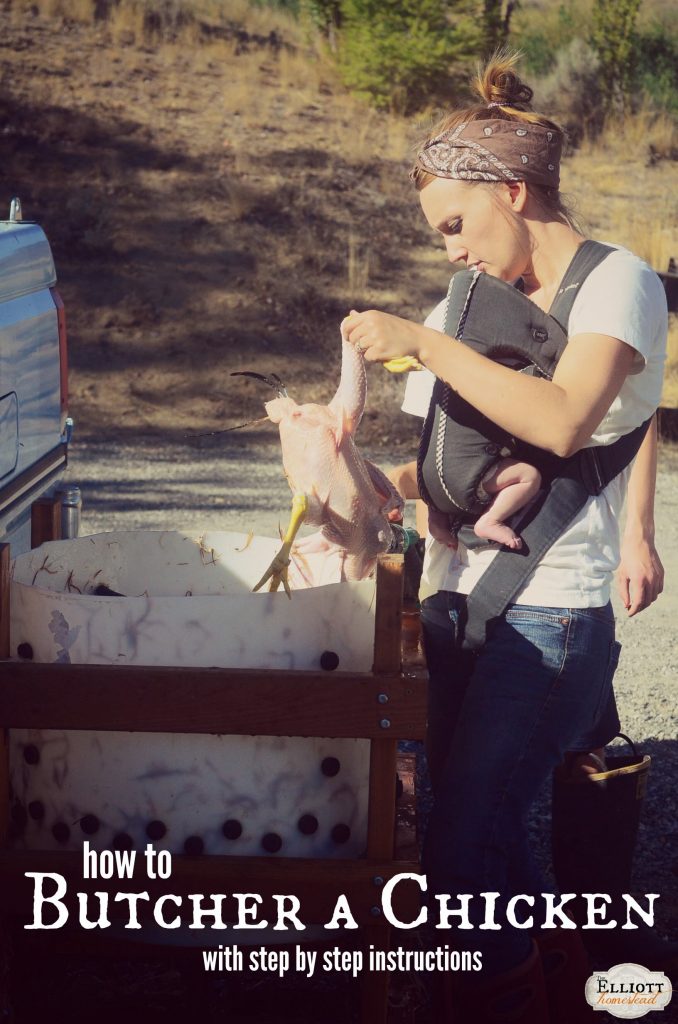
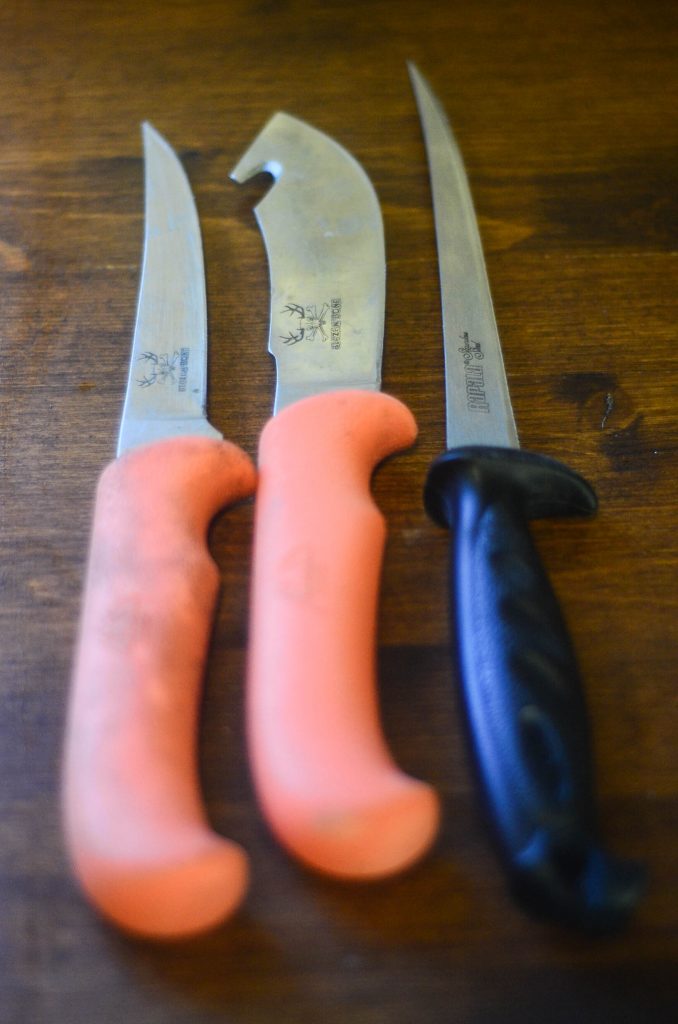
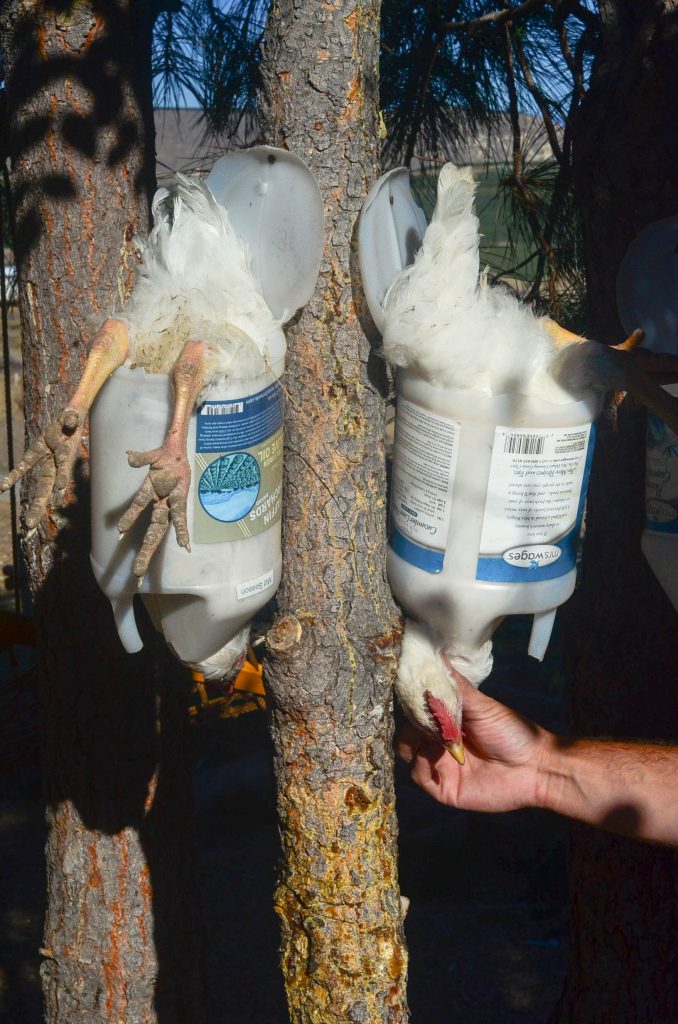
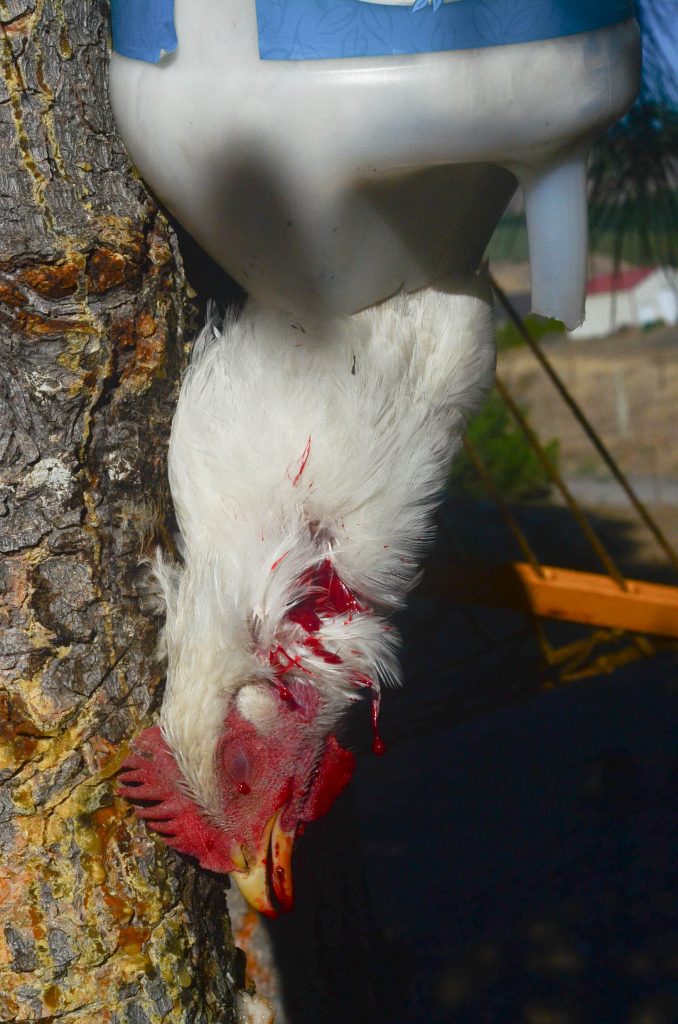
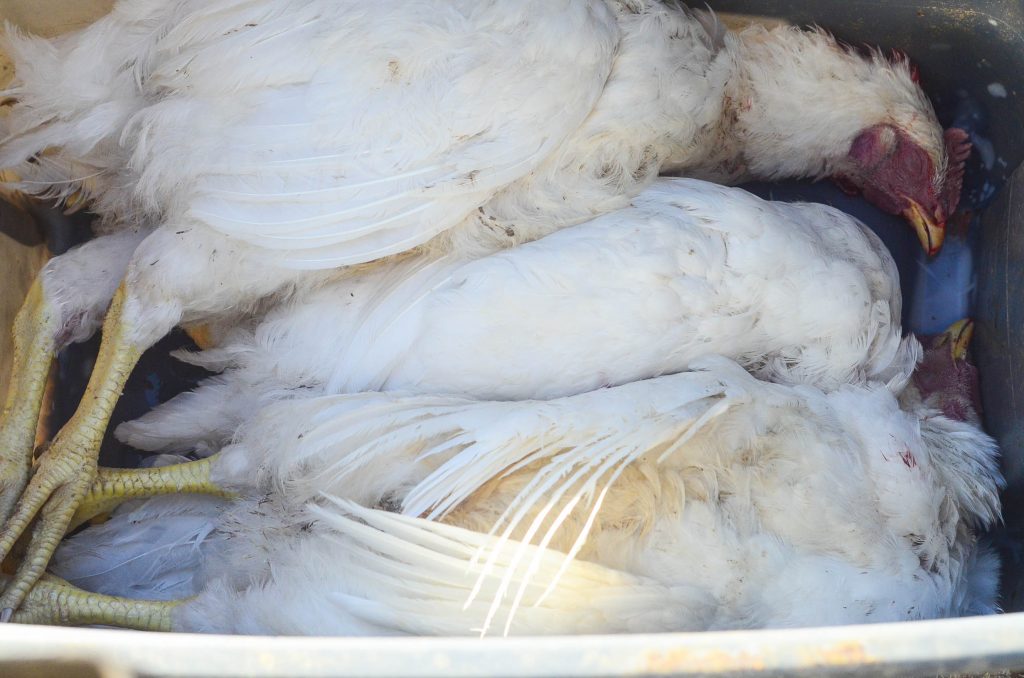

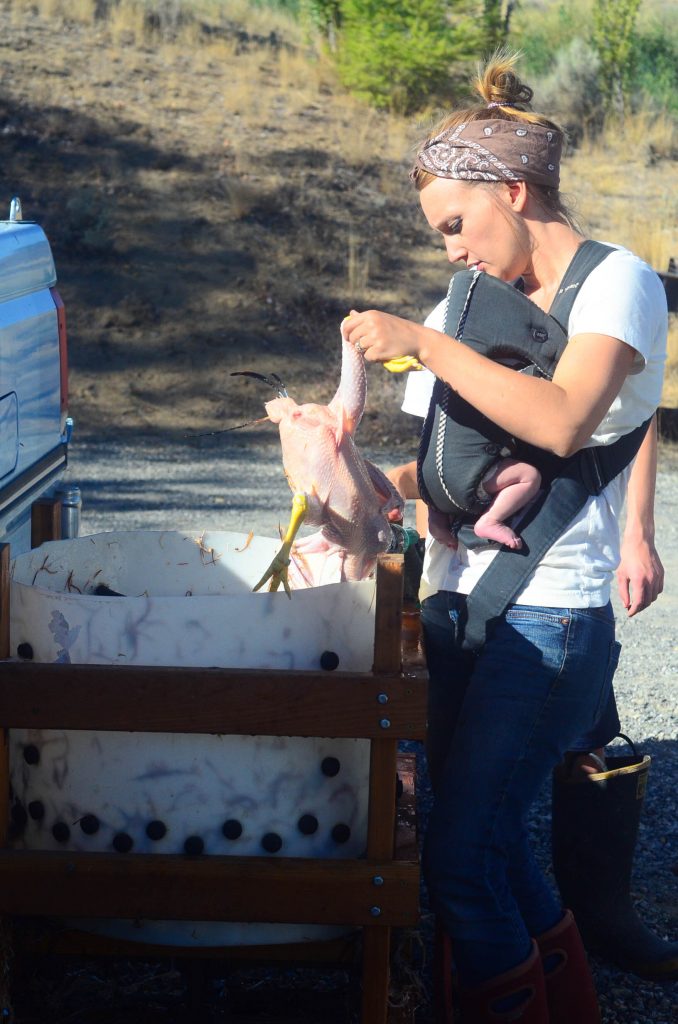
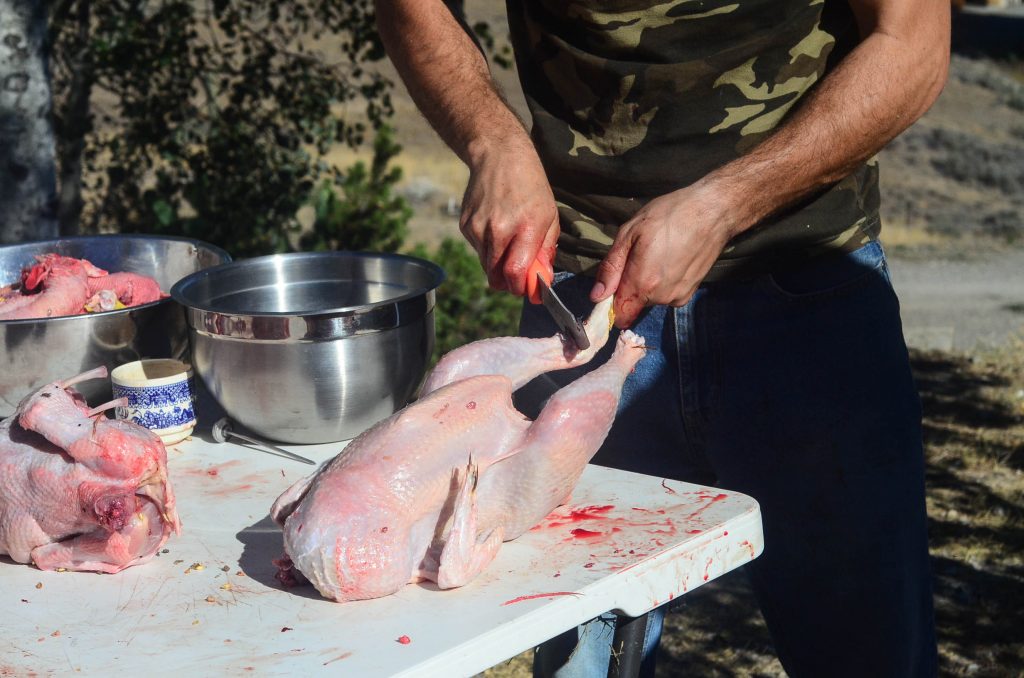
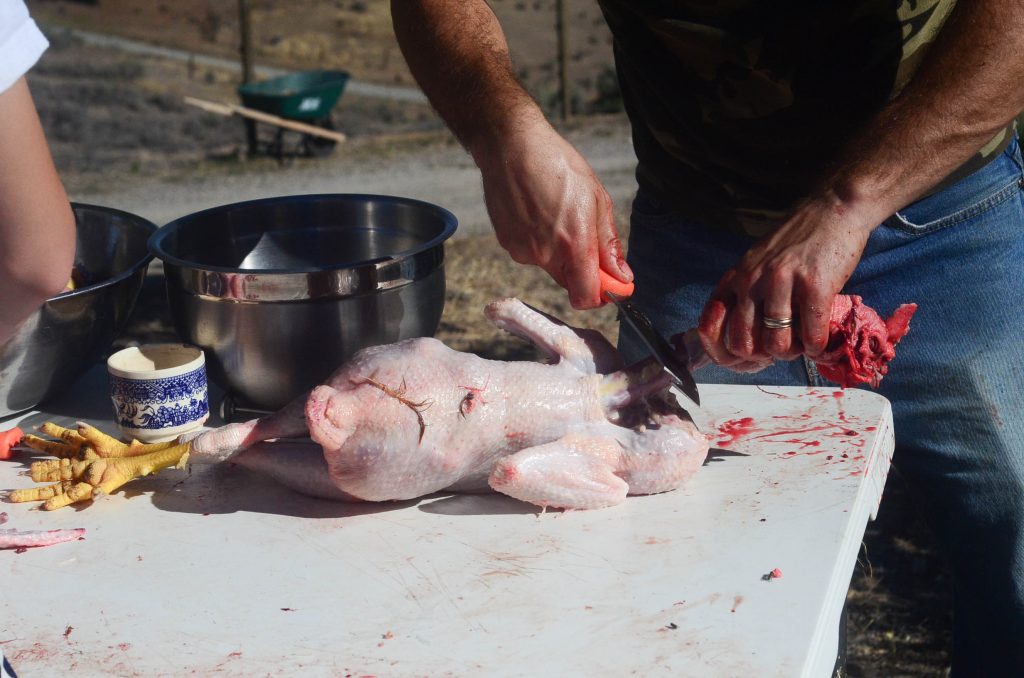
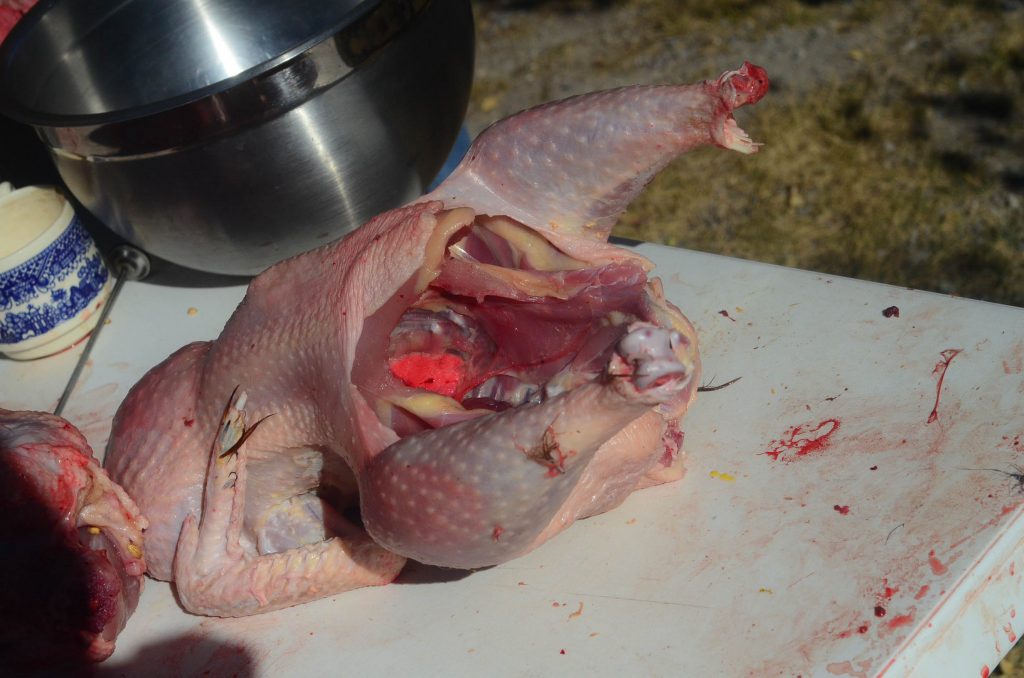
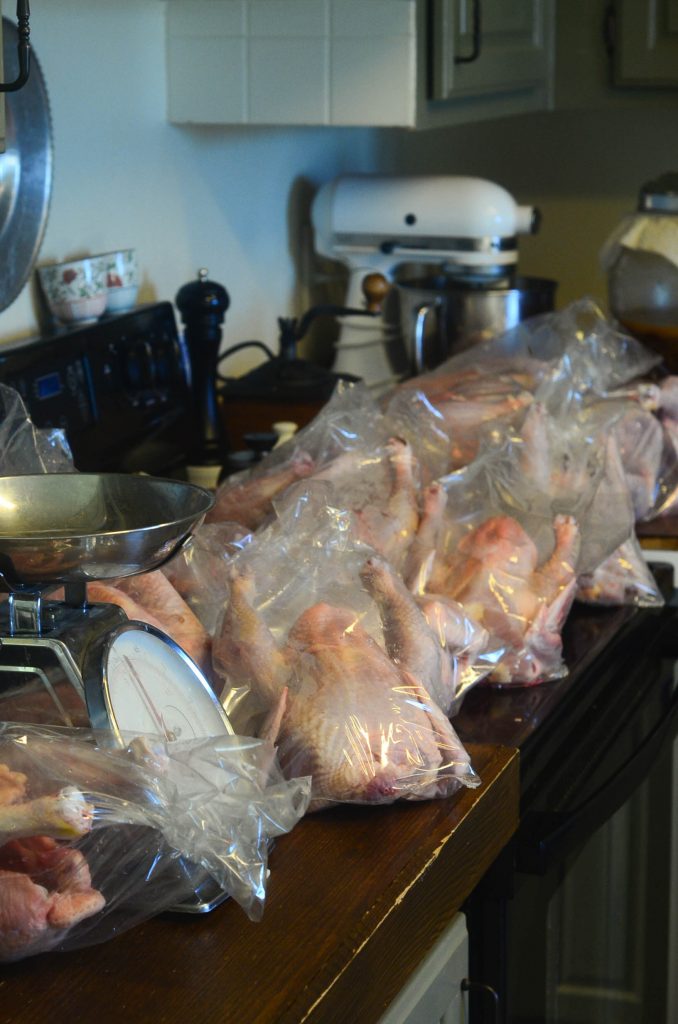
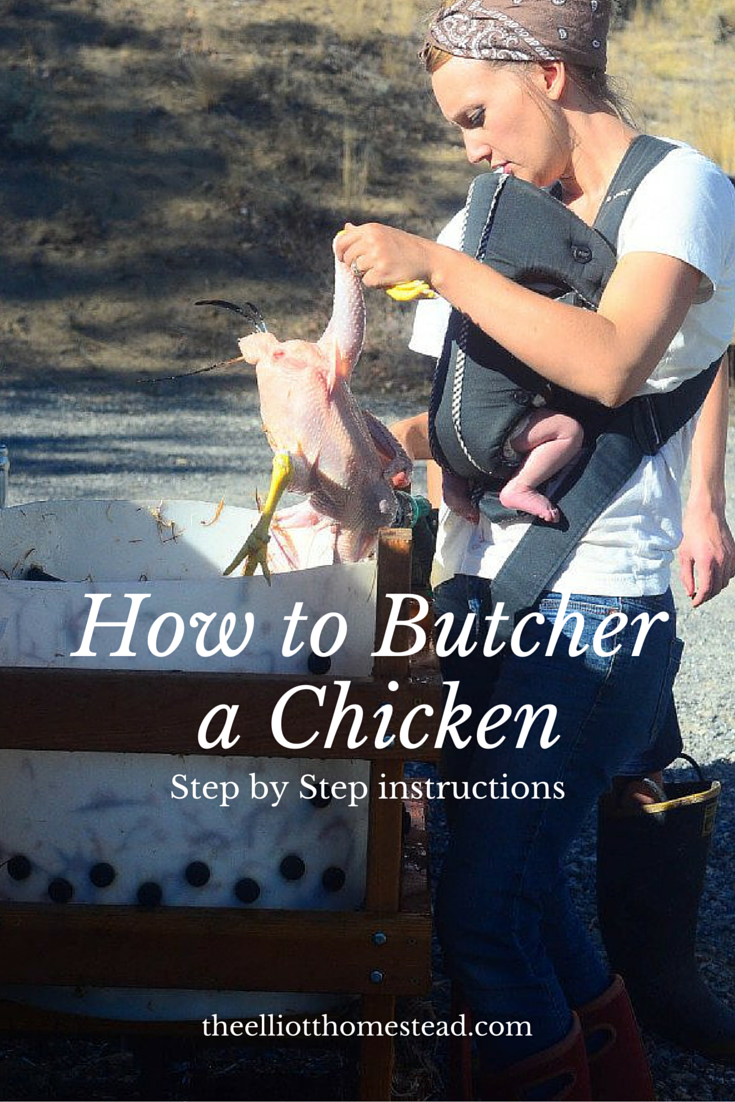
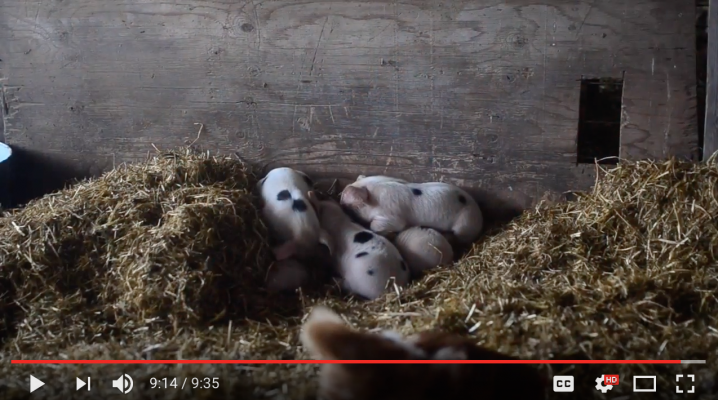
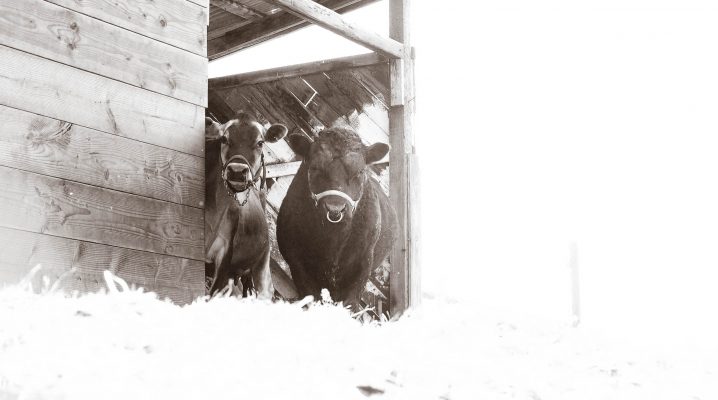
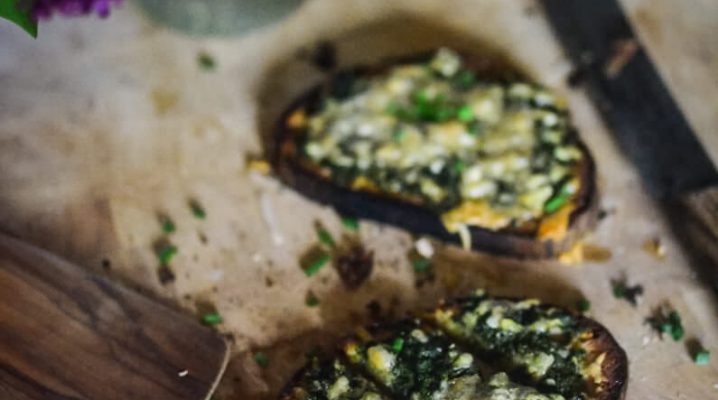
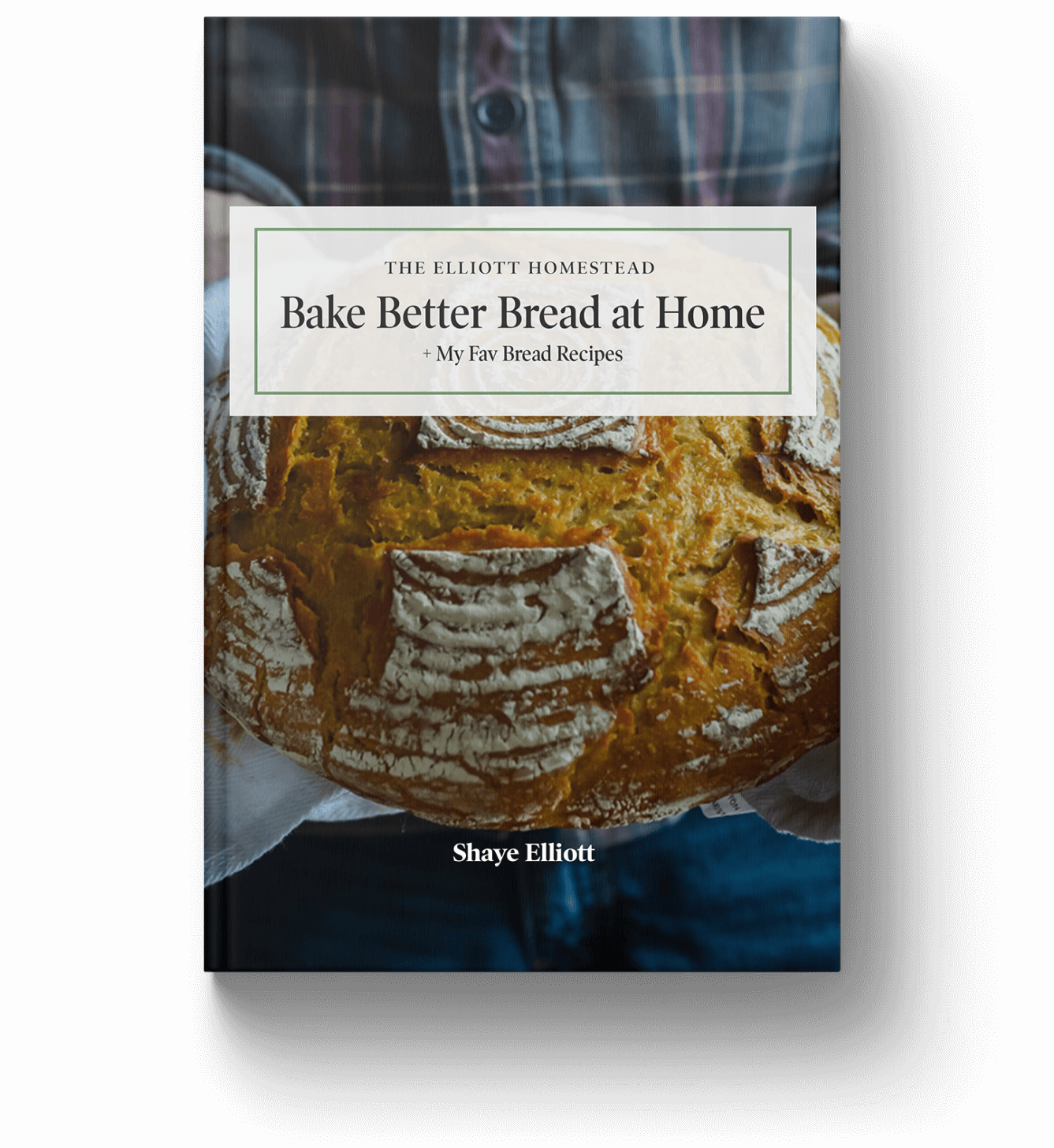
Good job! I’m glad I’m not the only one who wears her baby while butchering chickens. Lol 🙂
Haha! I totally thought I was completely insane when I was given six chickens to butcher, had no one to take care of the little (9months old) was on a time crunch so I just threw her in a carrier and went to town! I cant imagine what people would have thought had they seen me!!! lol…PS I live in the middle of town on a busy street 😉
The baby doesn’t bother me as much as that extra arm. Can you please explain the extra arm in this photo?
It’s another human. Look down and you will see a boot. He’s just almost perfectly obstructed from view
Yes!!! Was wondering the same thing!!
Too funny but it looks like a smaller person is standing behind.
They were 🙂 That’s a young fellow that comes to help us sometimes.
I don’t have a big scalder pot.
I’m not a big fan of skin.
Instead of removing feathers, can I just skin the birds?
When I buy store bought chicken, I buy boneless/skinless.
Thanks if you know.
I’ve butchered other animals and skinned them but not sure if the feathers come off with the skin as they seem embedded deeper than the skin.
Looks like her husband’s hand. The structure matches the hand from the man in the camouflage shirt in the next picture. It does look strange behind her though!
Thank very much Jenna for your post, I have been breaking chicken’s wings when trying to slaughter, I was using my force. From today I learned how to slaughter a chicken in a simple and easiest way.
Where do u get the shrink wrap bag? And I never keep the feet or extra parts we cut off for stock but that is a great idea. How do u clean the feet my chickens are always dirty and usually the first thing we cut off after plucking and toss. Also, super jealous u have access to an automatic plucker. One more question, do u do turkeys too and would u use a kill come? We have never used kill cones but I would like to try.
Once you have scalded your chicken the feet should peel easily. If they don’t then you didn’t scald enough.
Keeperofthehomestead.com has an awesome breakdown of making stock from chicken feet.
Thanks for putting this post together, Shaye. I think it’s a valuable resource for any homesteader, or “wannabe” homesteader. But, more importantly actually, I think it’s an important thing for anyone who eats chicken to see — this is the way it’s *supposed* to be and we really all ought to know that.
Ftw! “…feathers pull out like warm butter, baby.”
How do you fit all those chickens in your refrigerator?
I second this question. Do you have an extra refrigerator that you use for this purpose? I’m pretty sure I can’t get that many chickens into my fridge all at once.
Yes, it is quite common for homesteaders to have multiple refrigerators and freezers… it’s not really that uncommon, esp. if they have large families. 🙂
What I can’t figure out is what’s going on with that extra arm behind her.
Im so glad to see people haven’t lost this way of life.
Do you not close the the shrink wrap bag for 1-2 days? I want to make sure.
That’s correct.
Did the article and pictures disappear? I do not see anything except an add, some other articles to read, and then the comments….
Never-mind! It just showed up. I guess it was just really slow to load.
haha in the very first picture in the post it looks like you grew a 3rd arm out of your back lol
Saw the third arm as well. Made me laugh!
When we process and bag, we cut the wings off the breast, the breast off the bone, cut the leg/thigh quarters off the back, and then stew the back and remaining bones. When we vacuum seal the meat, we are not vacuuming a whole bird with all the empty cavity. We can vacuum the breasts flat and they stack nicely in the freezer. Wings get cut up and are ready to become Hot Wings and go in their own bag, and the leg quarters get their own bag. Many chickens are then in much less space in the freezer. All the stewed meat is then boned and also frozen. We also let our birds get pretty big (10lbs) before we process.
Thanks for the advice!
We do the same. I keep about 1/3 of the birds whole for roasting but it makes portion control so much easier if you only have two in your household. I also like just white meat for some recipes and dark for others. I use all the rest for stock. I can that and have enough for a year.
And if you skin the chicken, you don’t have to scald or pluck feathers, they’re gone with the skin. We would hang our chickens upside down by their feet until they passed out then bled them out, but I like the jug idea, less splatter.
I just asked about skinning then found your post, thank you!
Skinning is what I was wondering about.
Ha! I noticed it too!
Oh my gosh, I’m glad I’m not the only one who noticed that!
We butchered ~80 chickens last spring. That was a long day!
But I was wondering about the chicken feet. I wanted to use them for stock, but you said that you just put them right in the bag? Do you clean them up? I read somewhere that they have to be peeled and de-toed before you cook with them. Do you do that after they are thawed for use or before you put them in the bag? Or maybe not at all? Thank you!
I freeze them and pull a few out at a time for stock. I clean them (deskinning) before putting them into the pot!
I was raised on a farm and my grandmother only killed a chicken when we needed one for dinner. She kept them for egg laying as long as possible. Butchering a lot at a times seems strange to me but I can understand the purpose.
PS.. I can still remember the smell of scalding bird feathers. Not a pleasant smell.
She stated that she was using meat chickens. True meat chickens do not live long enough to lay eggs as the rapid growth on their bodies is excessive which is why they are normally butchered when deemed appropriate and are not keep around like standard ‘egg layers.’ The other option would be to have ‘dual purpose’ birds but their meat isn’t quite the same as meat birds.
If I could make a suggestion, after parts are removed and the bird cleaned its a good idea to put the birds in ice. This draws out all the blood making them really white. So glad that you are posting things of this nature. Its really sad how many people don’t know how to butcher a chicken or turkey or anything else. As a 4-H leader and mom of six I know how valuable these lessons are.
Sorry , I just saw the part where you did place the bird in ice. Way to go!
What an awesome post Shaye! You are my hero! This is on my bucket list. Once me and my husband move out of an apartment and on to a little land, we are going to start our homestead, first small, but then hopefully we can raise our own meat for our family, not to mention all the veggies! I can’t wait, but until then I will continue to stalk your blog learning as much as I can! I really appreciate how detailed your posts are, and I also think you write beautifully. <3 ::internet hugs::
So impressed that you’re butchering with a baby on your chest! Just awesome. 🙂 I just butchered chickens with my family (parents, older brother and sister-in-law). I do the gutting too. I need ask for the heads and feet. – Love your blog by the way. You always inspire me and make me laugh. 🙂
When did you take the gizzard out? I have never been able to pull it with the guts. I have to cut it out separate. How do you do it?
Great post about butchering. Most people don’t know who easy it actually is to do. Thanks for the note about air chilling…I didn’t know that before. Most of our chickens get vacuum packed and frozen same day but I think I’ll be investing in a small “chicken fridge” for our other birds.
I also loved seeing the pic of you and the baby. It’s so important for our kids to know where our food comes from and we involve our kids in raising and some of the butchering of our animals as well.
More than the baby-wearing, I’m impressed you’re wearing a white t-shirt! My dad and I are heading out now to slaughter five roosters and this review was helpful – thanks!
Can you tell me what brand of knife is the orange handle ones?
shats with the extra arm?? Need a hand…hahahaha…..
Hi, what a great post. We too raise our own meat animals and I once butchered a pig while 6months pregnant. Everyone though I was insane! My husband did the heavy lifting and I did the rest. Being able to provide for my family is the most satisfying feeling life can offer.
Thanks again for the blog, this year we start building our house, an Earthship. I am getting nervous about getting things right but as you say we learn from our mistakes.
We also do meat birds and love making stock with the feet but I have never used the head before. Do you just put it in whole?
Fellow homesteader, Xandra.
Girl… you’re hardcore 🙂
Kudos for chicken butchering while baby-wearing!! I already knew how to do this, and you’ve explained it really well, I just thought I’d pop in to give you an “atta-girl!” for butchering, and a double atta for keeping your baby close!! 🙂
So, I’m about to process chickens for the first time and I was expecting to put them straight into the freezer. This important 1-2 day chilling process in the refrigerator poses a problem, though, seeing as we don’t have any room in our main fridge and we don’t own a 2nd refrigerator. Buying a 2nd fridge seems like it would cut severely into the long-term savings of raising our own birds.
Did you buy a 2nd fridge for this? I’m curious to hear your thoughts about the expense if you did.
another way to do it that i found works is to age AFTER freezing. you just need to remember to take the meat out a few days early, to give some time for it to defrost, then let it sit and age in the fridge. fresh meat will become stiff. so if you have a whole bird its easy to check, just try to extend a leg or wing. it will be stiff at first and hard to open.. when the muscles relax, it will be very loose and easy to move. use this time to marinate too, i add a little meat tenderizer if its a rooster or older bird. If you part the birds out, or spatchcock them(look it up) they will lay flat and take up less than half the space. I can do four birds and package them and they stack on a single small shelf in my fridge.
Your blog is inspiring. I’m still looking for land but look forward to stalking your blog continually. I wanted to ask what you do with all the feathers and how their disposed of our if they’re usable for anything, though I assume not. I can’t imagine burning them would be very pleasant. Thanks!
Hi Christia,
Our chickens and ducks actually run up to us and eat the feathers. We give them heaps of protein but they seem to really like the feathers! It worried me at first that they would recognise the cockerel we were processing but they didn’t seem fazed and excitedly ate some feathers. I compost whatever they don’t eat that day. Burning would be smelly and the feathers might end up flying up when on fire if there is a breeze so just keep that in mind if it’s an open fire.
What breed of chickens do you use for meatbirds?
We use Freedom Rangers. We’ve been very happy with them!
So this was maybe discussed but I missed it. Can you butcher chickens that have stopped laying, say around 4 -5 years old? I do not know what to do with mine, except run a Geriatric home for chickens and they do not make it easy to get new ones because they are aggressive to any newcomers.
I just read your comment and I’m not sure if you ever got an answer, but I butcher my chickens that are no longer laying although the meat is much tougher than if you butcher meat birds it is still yummy 🙂 I pressure cook the older birds and then I have nice tender meat.
you can butcher anything, yes. the meat wont be as tender , so stewing, or pressure cooking is a good idea. when you butcher, keeping the bird calm is key. chopping off the head stresses teh meat and makes it tougher. the “cone” method used here is favorable. a very sharp knife makes a cut they really dont feel, and as they bleed out they pass out, only flapping at the very end, for a few seconds. make sure to age the meat at least three days after butcher and sprinkling with meat tenderizer or brining is very helpful. roosters are tough.. but i get them fairly tender with these methods. i have had to learn by reading posts on butchering, and aging is one thing that i hadnt learned until recently. it really changed how i feel about homegrown meat
My wife and i are just starting our homestead at 52 and 50 years of age, we are thrilled at the possibility and also warmed to the heart of our new found friends that are called homesteaders, thanks to all!!!
Thank you for this article. I am considering raising chickens and I know that no matter how much I don’t want to, the time will come that we will need to do some butchering. I did NOT want to watch a video about it! Your article is very respectful to the lives of the chickens, and now I know that this is something that our family can do for ourselves.
I read this article before we butchered out first chickens. It was very helpful and I am happy to report we put up a freezer full of chicken! And I too had to baby wear while butchering!!! I am glad my little one will grow up knowing where her food comes from!
I think was a wonderfully written article. I grew up butchering chickens every summer at grandma’s house. We did a 100 each summer and did it over 1 weekend. It was crazy! Lol. But the whole family helped out. We each had a station. Mine was with grandpa catching and killing, my aunt plucked, my mom scrubbed and my other aunt and grandma gutted and broke them down. We never let them rest in the fridge for a day or two (I will be trying this next summer 🙂 ). I did want to offer a tip that we used that you might like. Right after the chickens came off the plucker we would run a small blow torch over them real quick to get rid of the little hairs works like a charm! Thank you for your wonderful article.
Oh and I love the way you use jugs for killing cones we always did that too! 😉
I believe this is one of the so much vital
info for me. And i’m glad studying your article.
But should remark on some normal issues, The website taste is perfect, the articles is truly great : D.
Just right process, cheers
Hi!
I’ve had chickens for four years and haven’t been able to bring myself to butcher roosters or do any mercy killings. I’m at the point where the young roosters are affecting the health of my hens so I need to dispatch them or risk losing hens that I’ve had for a few years. I like your explanation and hope to use it within the next few days.
How long will the bird last once it’s been shrink wrapped and frozen?
Is shrink wrapping necessary?
Thank you in advance.
Thanks so much for this. Very humane and to the point. Looking forward to learning myself.
Can I shrink wrap them first before chilling them in the refrigerator? Why do you leave the bags open? My in-laws will be helping me, and i’d like to shrink wrap them before they transport their birds home.
How do u dispose of the blood and body if you don’t plan on eating them?
Thanks for a great article!! It’s been quite a while since I last butchered a chicken. Your blog was an awesome review.
I have some older roos I’m planning to make into sausage. Is the two days of aging required for ground chicken meat.